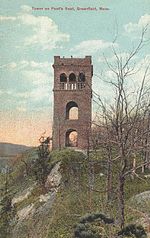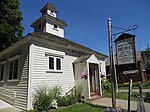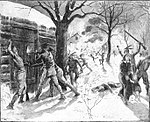Pocumtuck Ridge Trail

The Pocumtuck Ridge Trail is a 20-mile (32 km) footpath that traverses the Pocumtuck Range of Deerfield and Greenfield, Massachusetts. The trail is known for its dramatic views of the Deerfield River and Connecticut River valleys from extensive cliff faces. It traverses the ridgeline from Sugarloaf Mountain, at the southern end of the range, in the Mount Sugarloaf State Reservation, north over the main ridgeline of Pocumtuck Ridge, to Poet's Seat in Greenfield. Seventy percent of the footway is located on conservation land. As of May 2010, an exception exists approximately one mile north of the east–west crossing high tension power line that is itself north of Stage Road and Ridge Road in Deerfield. Here, a private landowner has barricaded the trail with orange snow fencing, and has posted a plethora of no-trespassing signs including "you do not have permission to be here" and "you are being watched."
Excerpt from the Wikipedia article Pocumtuck Ridge Trail (License: CC BY-SA 3.0, Authors, Images).Pocumtuck Ridge Trail
County Road,
Geographical coordinates (GPS) Address Nearby Places Show on map
Geographical coordinates (GPS)
| Latitude | Longitude |
|---|---|
| N 42.523888888889 ° | E -72.591388888889 ° |
Address
Connecticut River Greenway State Park
County Road
01342
Massachusetts, United States
Open on Google Maps








